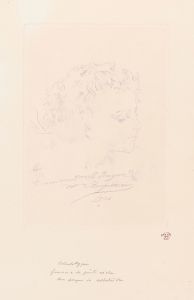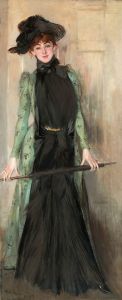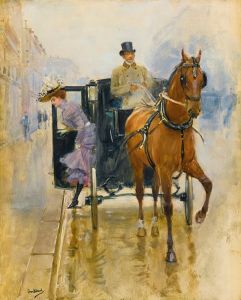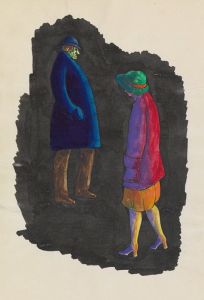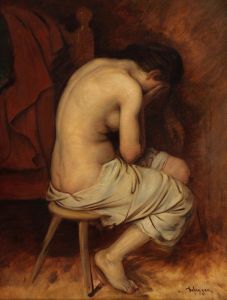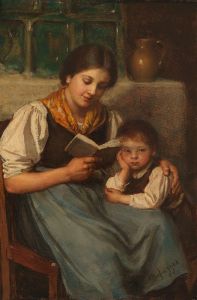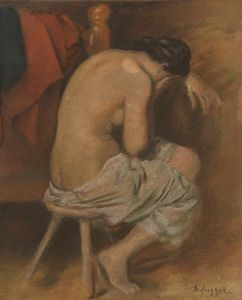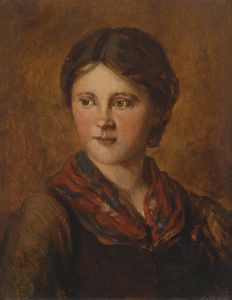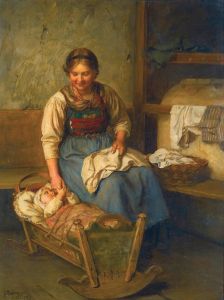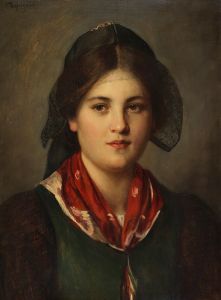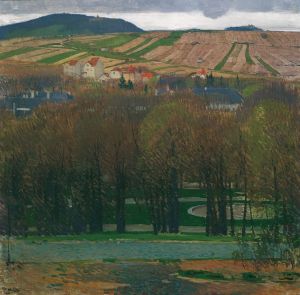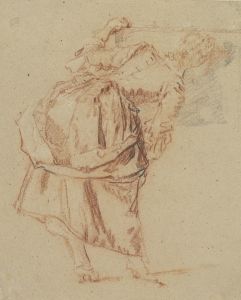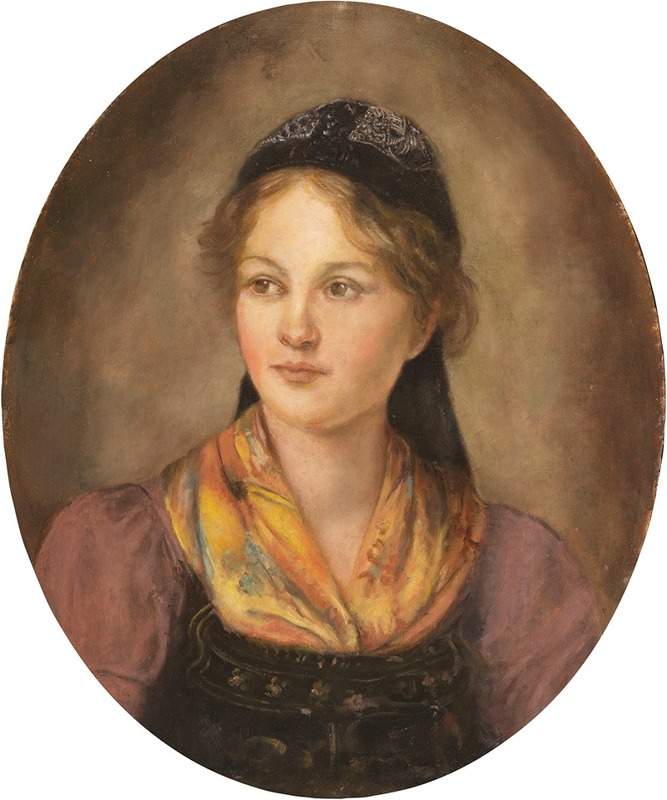
Mädchenporträt
A hand-painted replica of Franz von Defregger’s masterpiece Mädchenporträt, meticulously crafted by professional artists to capture the true essence of the original. Each piece is created with museum-quality canvas and rare mineral pigments, carefully painted by experienced artists with delicate brushstrokes and rich, layered colors to perfectly recreate the texture of the original artwork. Unlike machine-printed reproductions, this hand-painted version brings the painting to life, infused with the artist’s emotions and skill in every stroke. Whether for personal collection or home decoration, it instantly elevates the artistic atmosphere of any space.
Franz von Defregger was an Austrian artist known for his genre paintings and portraits, particularly those depicting Tyrolean themes and rural life. One of his notable works is "Mädchenporträt," which translates to "Portrait of a Girl." This painting exemplifies Defregger's skill in capturing the essence and character of his subjects with a keen eye for detail and a deep appreciation for the cultural context of his time.
"Mädchenporträt" is a fine example of Defregger's portraiture, showcasing his ability to render the human form with both technical precision and emotional depth. The painting features a young girl, whose expression and demeanor are captured with a sensitivity that reflects Defregger's interest in the individuality and inner life of his subjects. The girl's attire and hairstyle are indicative of the period and region, providing viewers with a glimpse into the cultural setting that Defregger often explored in his work.
Franz von Defregger was born on April 30, 1835, in Stronach, Tyrol, which was then part of the Austrian Empire. He initially pursued a career in sculpture but later shifted his focus to painting, studying at the Academy of Fine Arts in Munich. Under the tutelage of renowned artists such as Karl von Piloty, Defregger honed his skills and developed a style that combined realism with a romanticized view of rural life.
Defregger's work gained popularity in the late 19th century, as he became associated with the Munich School, a group of artists known for their realistic and detailed depictions of everyday life. His paintings often featured scenes from Tyrolean history and folklore, as well as portraits of peasants and rural inhabitants. "Mädchenporträt" fits within this broader context, as it reflects Defregger's fascination with the people and traditions of his native region.
The painting is characterized by its meticulous attention to detail, particularly in the rendering of textures and fabrics. Defregger's use of light and shadow adds depth and dimension to the portrait, highlighting the girl's features and creating a sense of immediacy and presence. The background is typically understated, allowing the viewer to focus on the subject and her expression.
Throughout his career, Defregger received numerous accolades and commissions, solidifying his reputation as one of the leading artists of his time. His works were exhibited widely, and he became a professor at the Academy of Fine Arts in Munich, where he influenced a new generation of artists. Despite the changing trends in art during the early 20th century, Defregger's paintings continued to be appreciated for their technical skill and evocative portrayal of Tyrolean life.
"Mädchenporträt" remains a testament to Franz von Defregger's artistic legacy, capturing a moment of quiet introspection and cultural authenticity. The painting is a reflection of Defregger's dedication to his craft and his ability to convey the beauty and complexity of human experience through the medium of portraiture.





